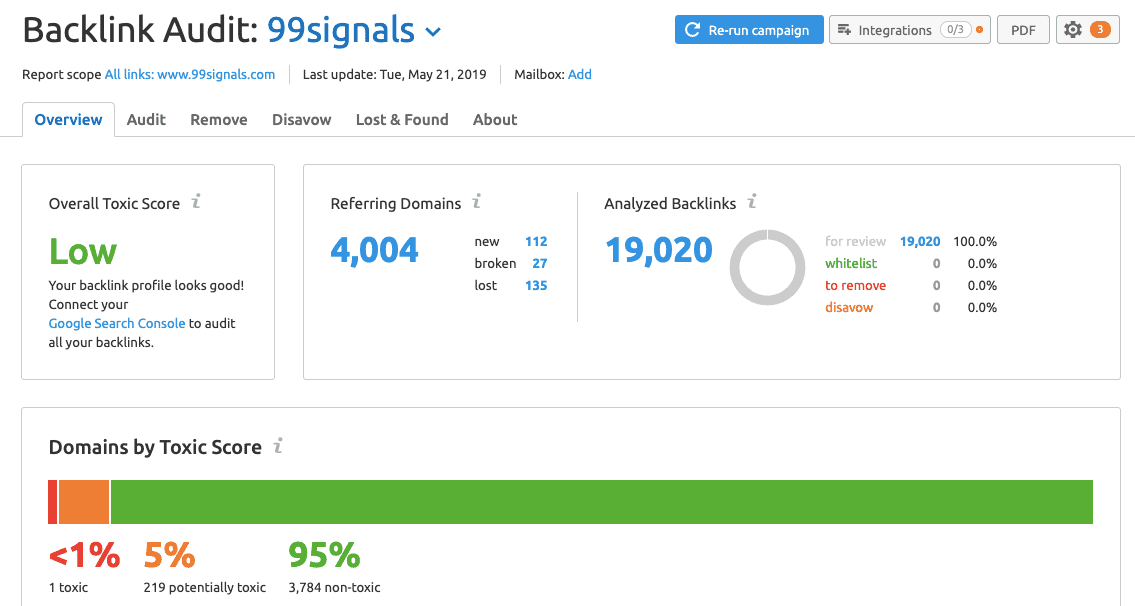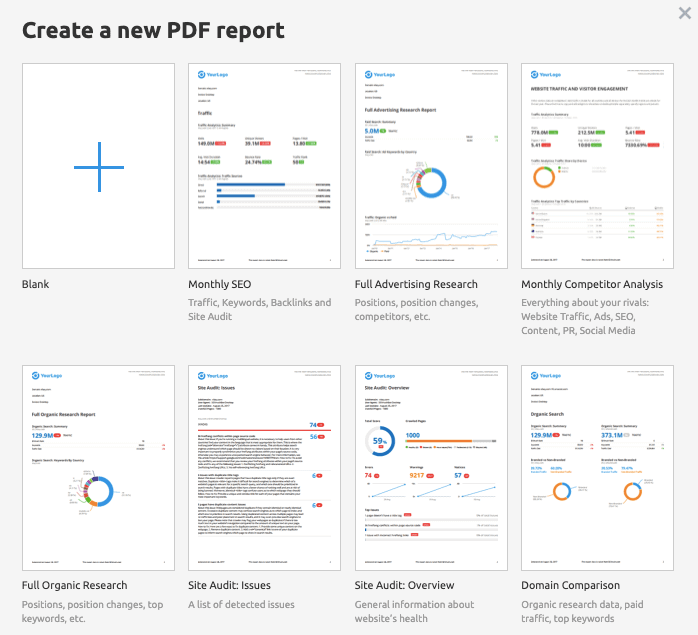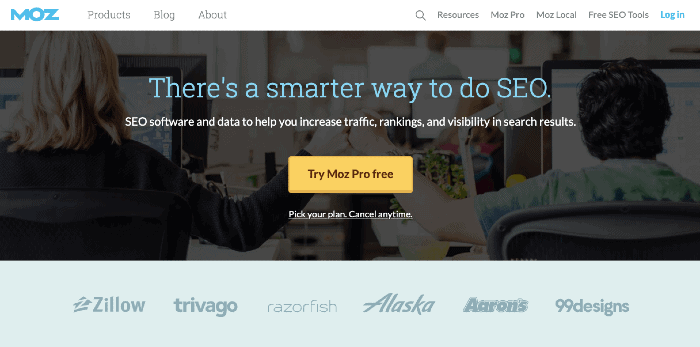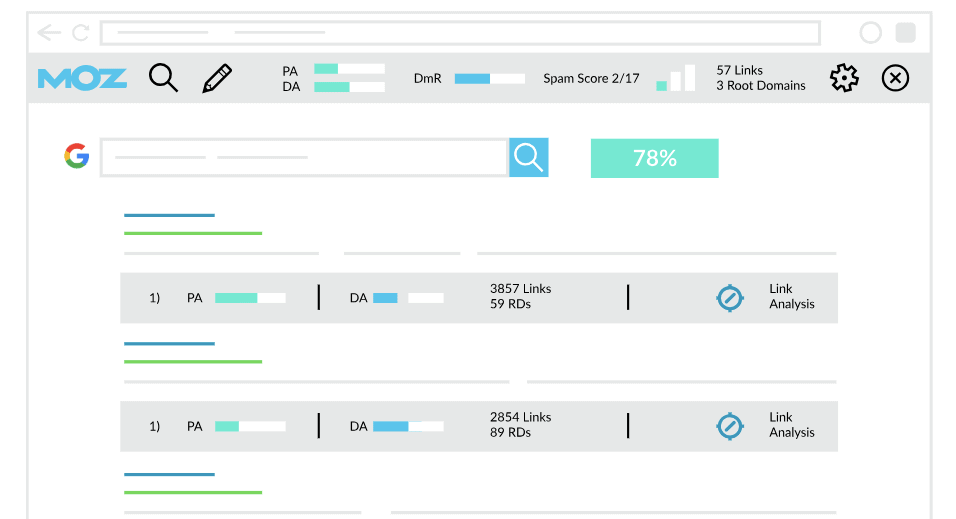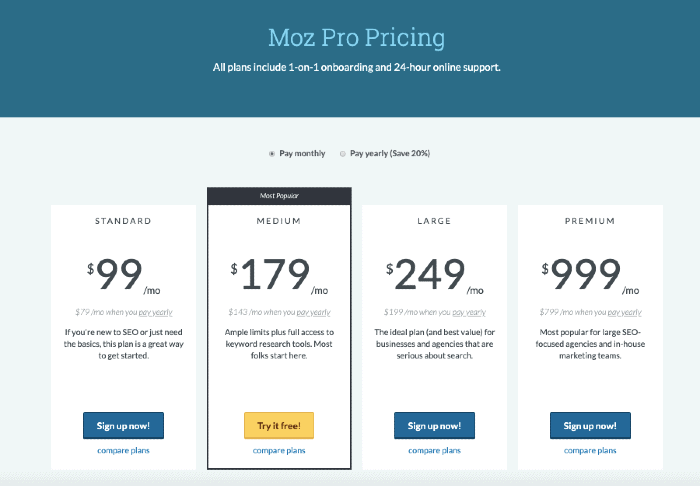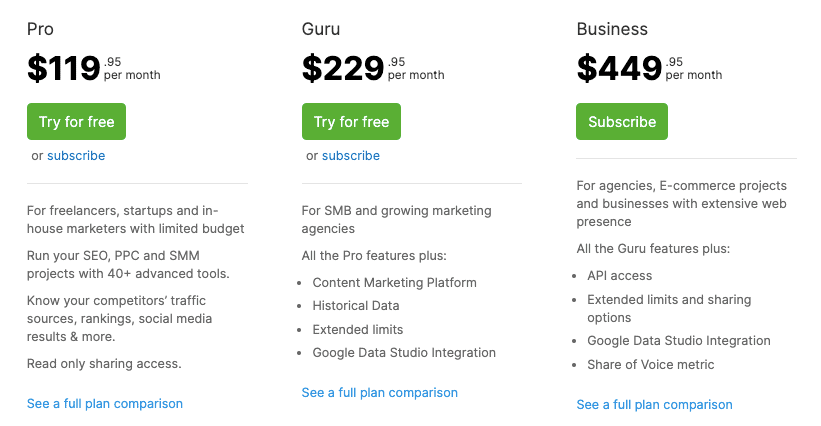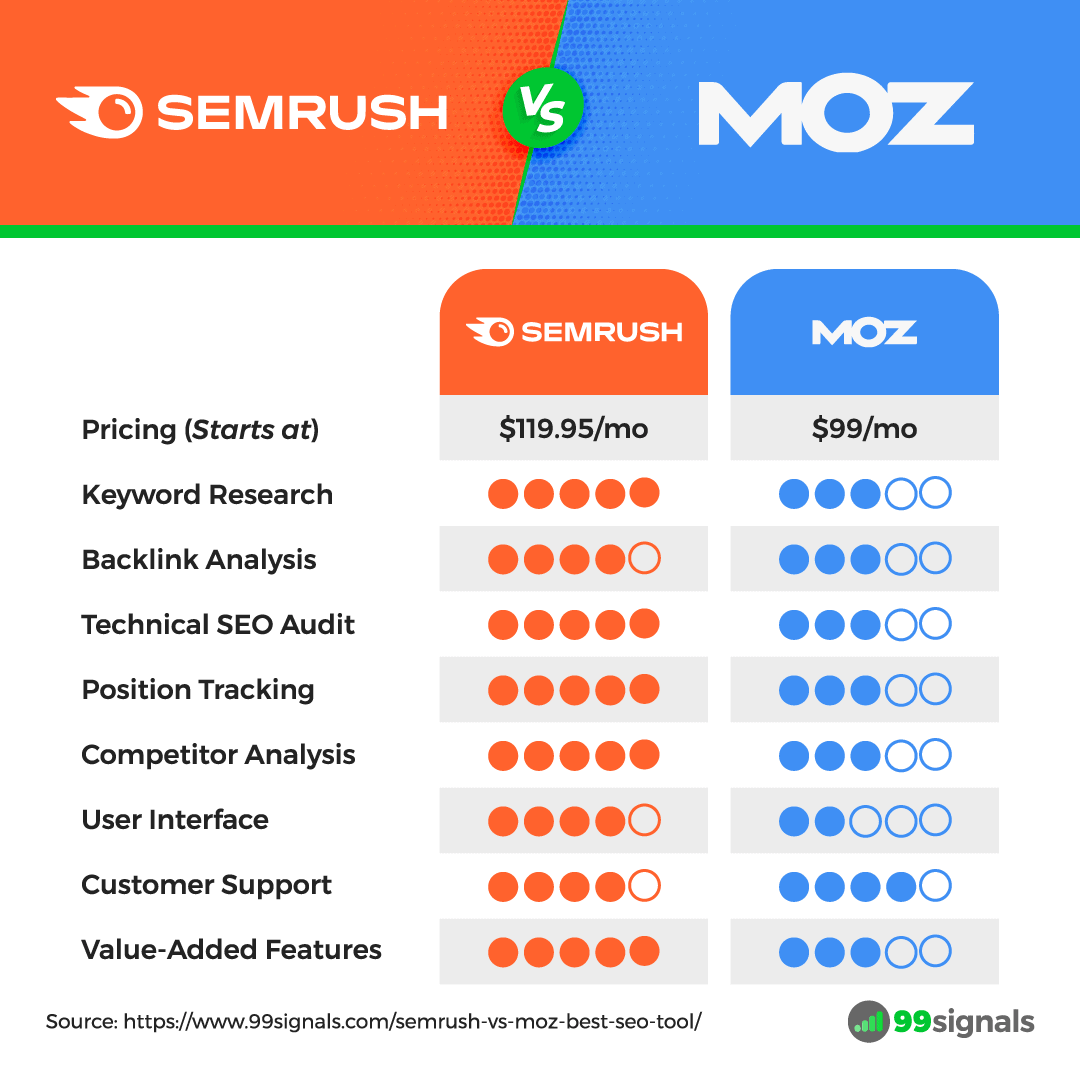To be fair, we weren’t offering SEO services back then like we do now, but we were helping our clients with content creation and content marketing. My team and I would register for free trials with Semrush, Moz, and other SEO tools such as SE Ranking, SpyFu, and of course, rely heavily on the free Keyword Planner tool from Google Ads (erstwhile AdWords) for keyword research and content planning. But there came a point in my agency career when using Keyword Planner and free trials of the aforementioned SEO tools was just not enough. Having been impressed with Moz and Semrush, I finally decided to take the plunge and invest in Moz, and a few months later, Semrush for keyword and competition analysis. Up until that time, I didn’t know what I was missing. With tools such as Semrush and Moz, you get to take your SEO game up a notch and come out with truly astounding results for your blog, business, and clients. If you’re reading this, then you’re probably deciding whether to invest in one of these SEO tools. You may have tried the free version of one of these or both these SEO tools and are now considering whether it’s worth upgrading to the full version. Well, you’ve come to the right place. Even if you’ve never tried any of these SEO tools, please read this post to learn more about their features and how you can leverage the power of these tools to improve your site’s search rankings. In this post, I’ll compare two of the most popular SEO tools and see how they compete against each other on features, ease-of-use, and pricing.
What is Semrush?
Just giving a search on Google with the keywords “SEO tools” will show you exactly how complicated and crammed up the SEO world is. There’s a tidal wave of resources out there and while most of these tools are loaded with features, they can make our lives complicated. But most bloggers, SEO gurus, and agencies will agree that Semrush probably provides the best bang for buck. I use Semrush for pretty much everything I do. I use it to find new keyword opportunities, do backlink analysis, fix site issues, and to spy on competitors’ keywords. (Side note: To learn more about how Semrush can help you crush your competition in search rankings, read this post.) At Startup Cafe, we use Semrush to help our clients rank better in search engines for competitive keywords and check data on how their competitors are utilizing SEO and SEM. If you know the current state of SEO, you know just how important long-tail keywords and low-competition keywords are. And that’s exactly the kind of data Semrush provides. In fact, Semrush has the largest keyword database in the industry (over 20 billion keywords) and you can easily obtain thousands of keyword variations for your target keywords.
Semrush is also second to none when it comes to providing the most accurate search volume data for keywords. Whether you’re using it to improve the SEO of your posts or to bolster your Google Ads campaigns, you can rely on Semrush to present the most accurate and relevant metrics for your target keywords. Try Semrush Pro for free for 30 days
How to Use Semrush
If you’ve never tried Semrush before, then you can read this section to know how to start. Others can skip this part of the post and move on to the next section to read the rest of the article. To get started, you’ll need an active Semrush account. If you don’t have one, you can register for a free Semrush account using the link below. This will give you free access to Semrush’s PRO plan for 30 days. Get 1-month free trial to Semrush PRO ($119.95 Value)
Once you’ve registered and logged into the Semrush dashboard, you’ll find the default search bar like the one shown above. Select Organic Research from the drop-down menu. Next, you can type the domain name of your competitor to see the keywords they are ranking for. For this example, I plugged in the Semrush website to examine the keywords they are currently ranking for. The results for your search should look something like this:
Scroll down till you find the Top Organic Keywords section and click “View all” to see all the organic keywords of the target domain.
The next step is to set filters to find the top 10 keywords for which your competitor is ranking for (this is just an example. You can set any parameters you deem fit for your competitive analysis). Make sure that the monthly search volume for these keywords is at least 30+. Once you’ve applied the filters, the results page should look something like this:
Once you have the data for the top 10 keywords that your competition is ranking for, you can optimize your own keyword strategy and content to make sure your website ranks well for each of these 10 keywords. In some cases, your competition may already be a big player in the market with several backlinks and other SEO factors to back them up. In such cases, what you can do is chase ‘low-hanging fruits’ aka long-tail keywords with low-to-medium competition. These are the keywords where the search volume is low, but the traffic is high since there is little to no competition. For example, let’s say you own a meditation retreat in Singapore and you’d like to increase the search traffic to your website. Instead of trying to optimize your site for the keywords ‘meditation retreat’, you can optimize your site for keywords ‘buddhist meditation retreat in singapore’ which is a long-tail keyword with low search volume, but good traffic. The best part about Semrush is that you can check not just Google ranking results, but also Bing. You can also check how your website and your competitors are ranking in over 120 countries. Visit the Semrush stats page to see the updated list of databases.
With the paid version of Semrush, you get the following features:
Site Audit – This is one of the best features that Semrush offers. You can do a site audit to find and fix the issues with your website. Semrush offers ‘health percentage’ of your site and notifies you via email whenever the health percentage of your site is at risk.
Position Tracking – Semrush’s position tracking tool is widely recognized as the most accurate position tracking tool on the market. With the pro version of Semrush, you can select up to 500 keywords and see how your website is ranking on search engines for these keywords. You can frequently monitor your site’s search visibility on both desktop and mobile, and take the necessary steps to optimize your rankings for critical keywords.
Backlink Audit – With the Backlink Audit tool, you can conduct deep link analysis and identify toxic backlinks that may be hurting your site’s rankings. Semrush also sends you email alerts whenever the tool spots suspicious backlinks. Once you’ve identified all the toxic backlinks to your site, you can use Semrush to create a disavow file, which you can then submit to Google Search Console.
SEO Reports – If you run an agency, you know the importance of sharing weekly reports with your clients to track progress towards your goals. Semrush has the best reporting features amongst all SEO tools. Every report that you generate on Semrush can be downloaded in PDF format.
You can even schedule PDF reports to be sent to you via email at regular intervals. Scheduled reports are available even with the most basic plan ($119.95/mo). With the Guru plan ($229.95/mo), you can create branded reports by placing your company logo and name at the top of each report to give a personal touch to your SEO reports. With the Business plan ($449.95), you can take it to the next level by creating white label PDF reports by customizing the look and feel of your reports. You can do all these and more with a PRO subscription of Semrush. My suggestion would be to first try their free 1-month trial and use all these features yourself. I personally use Semrush’s Guru plan ($229.95/mo) because of the higher limits and the fact that you get access to Semrush’s Content Marketing toolkit. This toolkit includes 6 amazing content marketing tools to help level up your content and beat your organic competitors in SERPs. To learn more about Semrush’s content marketing features, refer to this post. Verdict: Semrush is a top-notch SEO tool, which is used and trusted by SEO gurus throughout the world. If this is the first time you’re investing in an SEO software, then Semrush is the tool you should opt for because it allows you to perform advanced SEO tasks with ease. From keyword research to competitive analysis to technical SEO audit, you can trust Semrush to arm you with useful data to help you rank higher in search engine result pages (SERPs). In other words, you’ll be improving your site’s SEO by leaps and bounds. Is it worth paying over $100 a month? Yes, and it’s worth every penny. When used to its potential, the ROI is pretty strong with this one. Get 1-month free trial to Semrush PRO ($119.95 Value)
What is Moz?
Started way back in 2004 by Rand Fishkin and Gillian Muessig, Moz first started as an SEO consulting company before they developed their first SEO tool. Rand Fishkin is immensely popular in the SEO community, and deservedly so. His Whiteboard Friday videos are a must-watch and his brilliant book Lost and Founder should be required reading for all entrepreneurs and marketers. Though Fishkin is no longer at Moz (he left the company in 2018 to launch SparkToro), he’s still in the board of directors and an integral part of the company and its ethos. I’m a big fan of Rand Fishkin and his content. He’s one of the few SEO thought leaders who can be considered an influencer. But when it comes to Moz’s flagship SEO tools, I’ve mixed feelings. Like Semrush, Moz is an all-purpose SEO tool that you can use for site audit, backlink analysis, keyword research, and so on. But that’s where the similarities end. Read on to learn about my reservations about spending $100 a month on Moz.
How to Use Moz
To get started, let’s talk about some of the good things that Moz offers. The best part about Moz is that pretty much everything good about it is FREE. So if you’re on a shoestring budget and don’t want to invest in SEO tools yet, but still want to ensure that your site ranks well, then the free services offered by Moz are industry standard. All of these tools below are free and you can use them to improve the search visibility of your site:
Link Explorer – You can track your link profile and uncover link building opportunities using this free tool Keyword Explorer – Helps you find the best keywords in your niche MozBar – Perhaps the best among free tools offered by Moz, MozBar is a Google Chrome extension that offers you a glimpse into any site’s Page Authority (PA) and Domain Authority (DA), both crucial metrics, on a regular basis. Your site’s PA and DA change on a monthly basis, so it’s important to keep a watchful eye on how your site is measured in these terms. Moreover, you can perform keyword research and link analysis of the sites you visit right from the browser bar (like shown below) without having to access the dashboard. You can get your Moz Bar Chrome extension for free here.
If you’re using Moz for free, then you can perform up to 3 searches per day. For the example below, I gave a search on “Moz.com” to find their DA and PA and to get a fair idea about their backlink profile. Now to the part that isn’t that good. Having been impressed with the free services offered by Moz, I decided to take the plunge for paid subscription and found myself a little underwhelmed. I didn’t mind paying the $99 per month price for standard subscription as long as the tools offered were worth that sum. Being a fan of Rand Fishkin, I so wanted to like Moz Pro, but it fell short of my expectations. I found myself using it less and less and canceled the subscription to look for better and cheaper alternatives. Having said that, Moz by no means is a bad SEO tool. I still use their free tools such as Link Explorer and MozBar for SEO to keep a track of my sites’ PA and DA. Moreover, Moz has some incredible SEO and content marketing resources that you can download for free from here. If you’re a beginner, then Moz has some of the best resources which you can read to familiarize yourself with SEO tactics. Their Beginner’s Guide to SEO is perhaps the best SEO guide I’ve stumbled upon in recent times. They also have an amazing blog that I visit regularly. Whiteboard Friday, a video series featuring started by co-founder Rand Fishkin, is something that you should tune in to every week. But if you were to ask me if I would ever subscribe to Moz Pro again for $99/month, my answer would be No. I’d like to emphasize that this is my personal experience with Moz. There are people who swear by Moz and they may be able to elaborate more on the paid services offered by Moz. Perhaps they’ve been able to spend more time with the tool and used it to its full potential. For me, everything good offered by Moz is free and if you had to invest in an SEO tool, I’d recommend Semrush. Try Moz Pro FREE for 30 days
Semrush vs Moz: Which SEO Tool Should You Buy?
If you were to compare the free tools offered by each of these platforms, both have their own strengths and limitations. But if we were to compare the features offered under paid subscriptions, then I’d highly recommend Semrush over Moz. I use Semrush for pretty much every SEO task that I do. Not just for my own blogs (99signals and Soulful Arogya), but also for my agency business where we offer SEO services to our clients. In my opinion, Semrush is a must-have tool if you want to grow your business as well as your blogging career. The sheer amount of data available on Semrush can be overwhelming at times, but they have excellent training materials and product guides to help you every step of the way. Their support team is really helpful and they organize weekly webinars that you can participate in to hone your SEO skills. Moz, on the other hand, is expensive for the features it offers. The best thing to do would be to try the free 30-day trial of Moz and probably then decide to take a plunge if you like the product. Like I said, your experience with the product may differ and you may find value in the paid services which they offer. On the other hand, if you had to invest in a powerful SEO tool, then Semrush has all the features you need and more. Give it a try!
Moz vs Semrush: Pricing
In this section, we’ll briefly examine the pricing plans offered by both these tools.
Moz Pricing
These are the Moz Pro pricing plans as of August 2020:
Standard – $99/mo (ideal for beginners) Medium – $179/mo (ideal for startups) Large – $249/mo (ideal for small businesses and agencies) Premium – $999/mo (ideal for large agencies and businesses)
Note: You can save 20% by switching to annual pricing. Try Moz Pro FREE for 30 days
Semrush Pricing
Semrush increased their prices in January 2021. This is Semrush’s current pricing structure:
Pro – $119.95/mo (ideal for startups and bloggers) Guru – $229.95/mo (ideal for SMBs and marketing agencies) Business – $449.95/mo (ideal for enterprise and large businesses)
Note: You can save 16% by switching to annual billing. Get 1-month free trial to Semrush PRO ($119.95 Value)
Final Verdict: Semrush vs Moz
I’ve had a fantastic experience using Semrush. I couldn’t recommend it highly enough. Having said that, I’d like you to approach these tools without any preconceived notions and form your own judgment in deciding which tool is more suited for your business and website. Which is why I’d urge you to try these tools for at least two weeks, or maybe even a month, before forming an opinion. Luckily, you can grab a 30-day free trial for both these tools and get access to most of their top features. Get 1-month free trial to Semrush PRO ($119.95 Value) Try Moz Pro FREE for 30 days To summarize this post, here’s a visual breakdown of how Semrush compares with Moz on key parameters:
Links to register free accounts with Semrush and Moz: Click here to get 1-month free access to Semrush PRO ($119.95 value) Click here to register your free account with Moz If you liked this comparison article, please do me a favor and share it on Twitter using the “Click to Tweet” link below. You could also share it on other social channels using the social share bar on the left. Editor’s Note: This article was first published on June 3, 2016 and has been updated regularly since then for relevance and comprehensiveness. If you’re an existing Semrush user, here are some resources you can check out to make the best use of your Semrush subscription:
10 Actionable Things You Can Do with Semrush to Boost Your Traffic How to Use Semrush for Keyword Research: The Definitive Guide Semrush Site Audit: 10 Most Overlooked Features How to do Competitor Analysis with Semrush [A Detailed Guide] 5 Best Semrush Features for Bloggers How to Use Semrush to Amplify Your Content Marketing The Ultimate Semrush Playbook [Free eBook]
Here are some more comparison posts featuring Semrush that you may find useful:
SEO Tools Showdown: Semrush vs Ahrefs vs Moz Pro vs SpyFu Semrush vs Ahrefs: Which SEO Tool is Better? Semrush vs Mangools: Which SEO Tool is Better? Semrush vs SpyFu: Which Competitor Analysis Tool is Better? Semrush vs Ubersuggest: Which SEO Tool is Better?


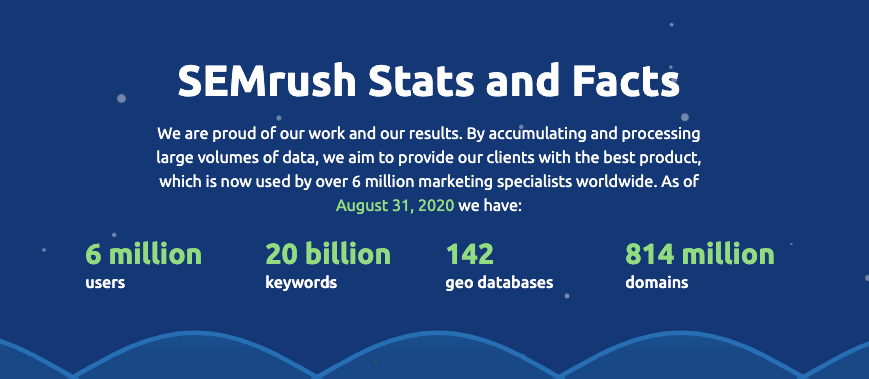


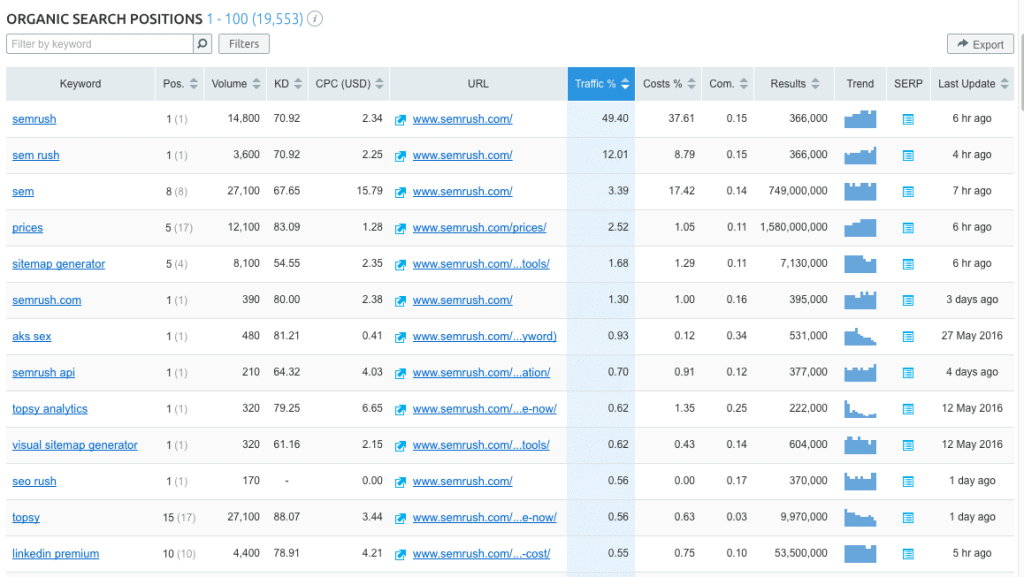
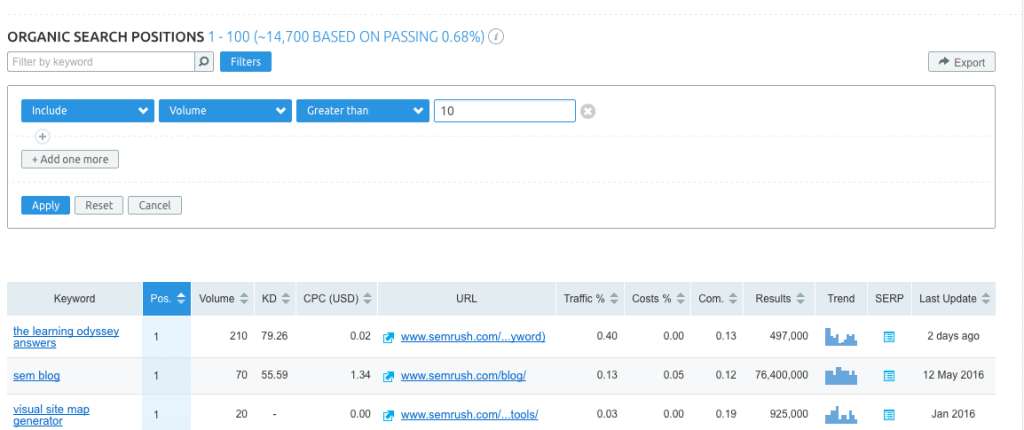
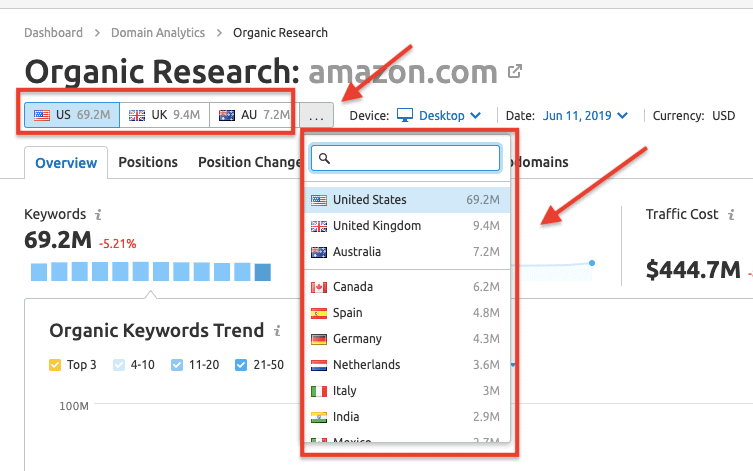

![]()
